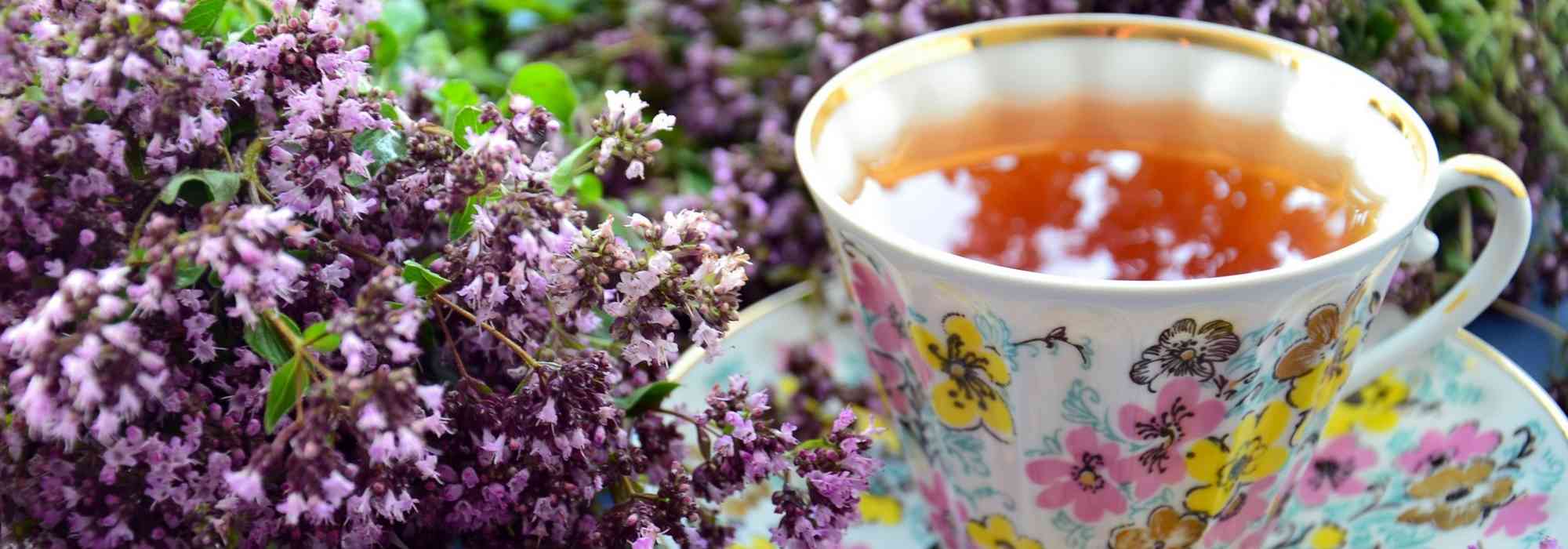
Tisane and infusion: which plants to grow in the garden ?
to enjoy the benefits of plants
Contents
What could be easier than making an herbal tea or infusion? Whether for health benefits or simply for pleasure, it accompanies us in our daily lives. In your garden, you can easily to grow many plants to make your favourite drinks. It’s practical and economical!
Discover our selection of plants to grow in your garden to make your herbal teas!
What is the difference between tisane and infusion?
Let’s start by clarifying various terms:
Words “tisane” and “infusion” are often confused. However, they are not the same!
A tisane is a beneficial drink (often described as an old wives’ remedy) obtained by infusion, decoction or maceration of plants in hot or cold water. Infusion is therefore one of the techniques used to make a tisane. It involves stopping heating the water as soon as it reaches boiling point, or even at the first sign of simmering depending on each person’s method.
Sometimes you will read the terms “decoction” and “maceration”. Decoction involves rupturing plants’ outer protective covering to release active compounds into the water. This applies to rather tough plants or plant parts (fragments of branches, roots, bark, seeds…). The technique is to place fresh or dried plants in a saucepan of cold water then bring to the boil for a few minutes. Then, off the heat, leave to stand for a while before straining and drinking or using the liquid.
Maceration is used for plants whose properties might be altered by heat. This time, the plant is left to steep for a period in cold water. Duration varies depending on active compounds to be dissolved. Then simply strain and consume cold or lukewarm.
Tisanes can relieve minor everyday ailments (indigestion, nausea, joint pain…) but also help relax, warm up or simply hydrate.
Note that tea is also a tisane made by infusing tea leaves in water and contains theine (which is simply the same molecule as caffeine).
Finally, a cup is considered to be approximately 150 mL of water.
Thyme
Thyme (Thymus vulgare) is a Mediterranean undershrub appreciated for its flavour but it is also a plant with many benefits !
To grow in the garden
Very easy to grow, thyme thrives in very well-drained soil and in full sun. It only dislikes excess water. Character: heat and drought give it more fragrance! In harsh climates, prefer winter thyme, the hardiest.
→ See our detailed sheet: “Thyme: to grow, to plant, to prune”
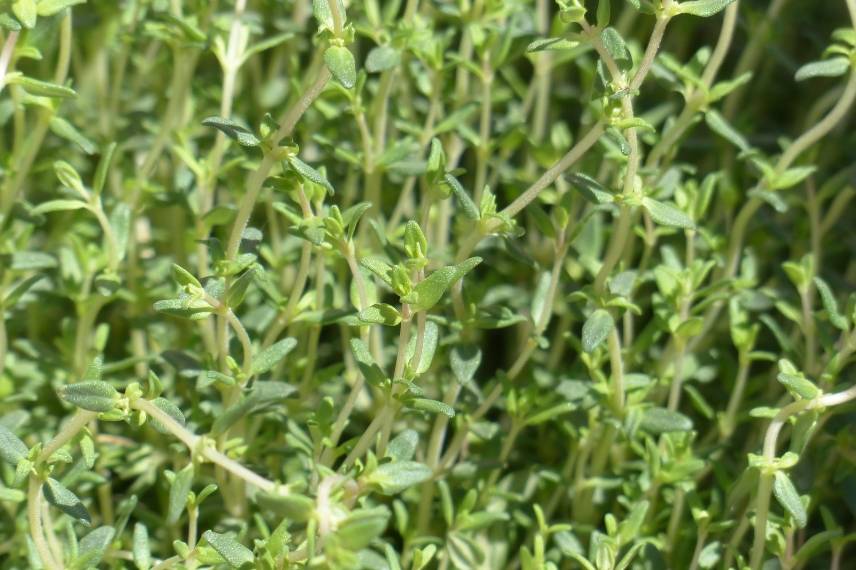
Medicinal properties
Thyme has digestive and antiseptic properties. It is also antispasmodic and therefore doubly recommended in case of cough or bronchitis.
Harvest
For storage, choose leaves only, while for fresh use take whole sprigs, flowering or not.
Pick thyme branches with a pruning shear about 2 or 3 cm from the base. Avoid taking shoots from the plant perimeter, often maculate with soil. Harvest when all the dew has evaporated. For fresh use, you can harvest sprigs throughout the year. However, for a large harvest intended for drying, take advantage of the annual pruning in spring to collect as many sprigs as possible then leave it alone.
Infusion
Immerse 2 branches of thyme in 1/2 L of boiling water. Infuse for 10 minutes. Add juice of half a lemon and drink hot.
In case of flu, breathing condition or rheumatism, drink 2 or 3 cups a day.
You can add lemon or orange.
Decoction
Put 4 branches of thyme in 1 L of cold water. Gently bring to the boil and let boil for 5 minutes. Infuse for a further 5 to 10 minutes before drinking.
In case of cough, drink a cup whenever a coughing fit occurs.
Discover other Herb seeds
View all →Available in 1 sizes
Available in 1 sizes
Available in 1 sizes
Available in 1 sizes
Available in 1 sizes
Available in 1 sizes
Available in 1 sizes
Available in 1 sizes
Available in 1 sizes
Available in 1 sizes
Sage
common sage (Salvia officinalis) is used as a condiment and is also a major medicinal plant.
To grow it in the garden
Sage prefers fairly dry, light, fertile, somewhat calcareous soil and full sun.
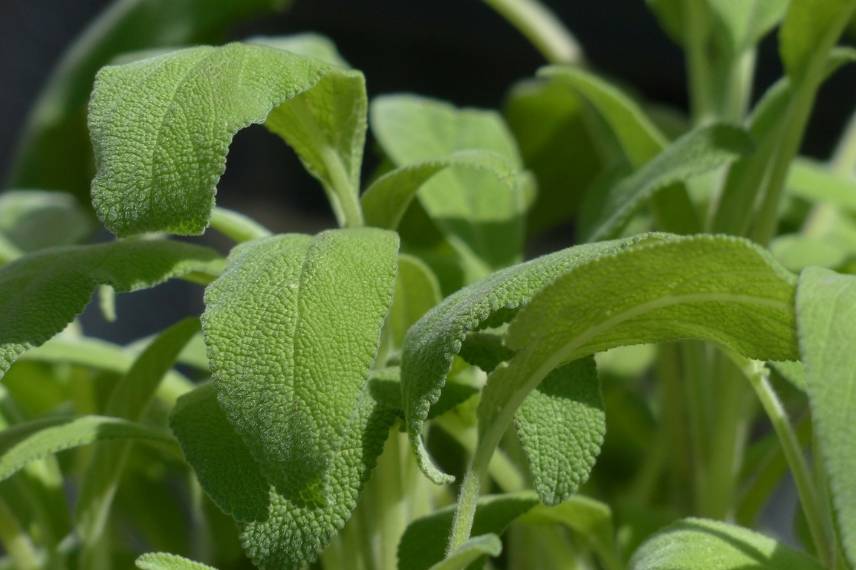
Medicinal properties
It is recognised for digestive properties. It is recommended for stomach aches, nausea or bloating. It is also stimulating, thereby improving blood circulation. Finally, it is diuretic and antispasmodic.
Harvest
Harvest sage from March to October as required. You can dry leaves or use them fresh.
Infusion
Plunge a few dried leaves or 2 fresh sprigs into a cup of boiling water. Cover and leave to infuse for 10 minutes. Drink one cup after both main meals.
Precautions
Active compounds in sage are potent; the plant should not be used continuously, during early pregnancy, by people who are nervous or in cases of hypertension.
My tip: try sage milk, it’s absolutely delicious! I make it regularly: a sprig of sage left to infuse for 10 minutes in a cup of hot, sweetened almond milk (the one from that well-known brand that starts with a “B” and ends with a “g”… not all are equal and it’s the best!) Divine!
Read also
Thyme: growing, planting, pruningFennel
Fennel Fennel (Foeniculum vulgare) is a perennial plant whose foliage, inflorescences, stems and even seeds have an aniseed flavour. It is also very decorative in the garden !
To grow in the garden
Fennel prefers fresh, well-drained soil in full sun.
Medicinal properties
It aids digestion by stimulating gastric secretions. As a spasmolytic, it helps in the treatment of colic. It is also effective as an expectorant. Finally, fennel has a beneficial effect on menstrual cycles and promotes lactation.
Harvest
Harvest seeds in September, just before their ripeness, and dry them in the shade.
Infusion
Put 1 level teaspoon of crushed seeds into a cup of boiling water. Let infuse for 5 minutes. Strain and drink in small sips.
If you have digestive troubles, drink 3 cups per day and do not sweeten.
Chamomile
Chamomile, whether German Chamomile (Matricaria recutita) or Roman Chamomile (Anthemis nobilis), is widely used in cooking, herbal medicine and cosmetics.
To grow it in the garden
Chamomile is undemanding. It thrives in sun or partial shade, in sandy, fertile soil where it self-seeds naturally.
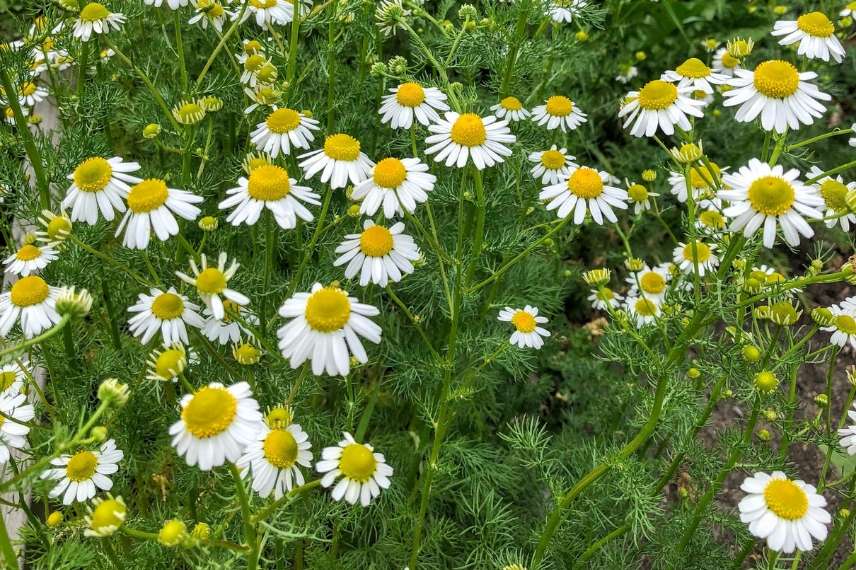
Medicinal virtues
Chamomile is anti-inflammatory, antispasmodic and digestive. It helps expel intestinal gas while reducing it. It stimulates gastric juices and awakens appetite. It also has a soothing and calming effect. Finally, it has a beneficial action on the female reproductive system, the womb, which even gave it its name (Matrix in Latin and Matricaria as its botanical name).
Harvest
Harvest chamomile flowers from early summer, as flowering progresses simply by pinching with thumb and forefinger just below the head. Wait until morning dew has dried. Inflorescences should be fully open but before they begin to wilt. Dry on absorbent paper, out of direct sunlight, in a thin layer. Turn the flowers every day, changing the paper if necessary. Drying should be rapid but allow 5 or 6 days. If flowers are poorly dried they blacken and lose their medicinal properties. Put in kraft paper bags and store away from moisture.
Infusion
Put 7 flowers in a cup of boiling water (10 flowers for 2 cups). Infuse for 10 minutes. Strain and drink.
For a calming effect: drink a cup in the evening before going to bed.
For intestinal troubles, drink one cup 3 to 4 times a day.
Special precautions
Do not use chamomile if allergic to Asteraceae.
Mints
Mints (mints) (Mentha) are aromatic foliage plants that need no introduction! They are valuable allies against fatigue and aid digestion.
Growing them in the garden
Mints do well in all exposures though they prefer partial shade. They like humus-bearing, cool soils. It is possible to grow them in pots if you are worried they will spread.
→ You will find more information in our detailed sheet: “Mint: planting, growing and propagating”
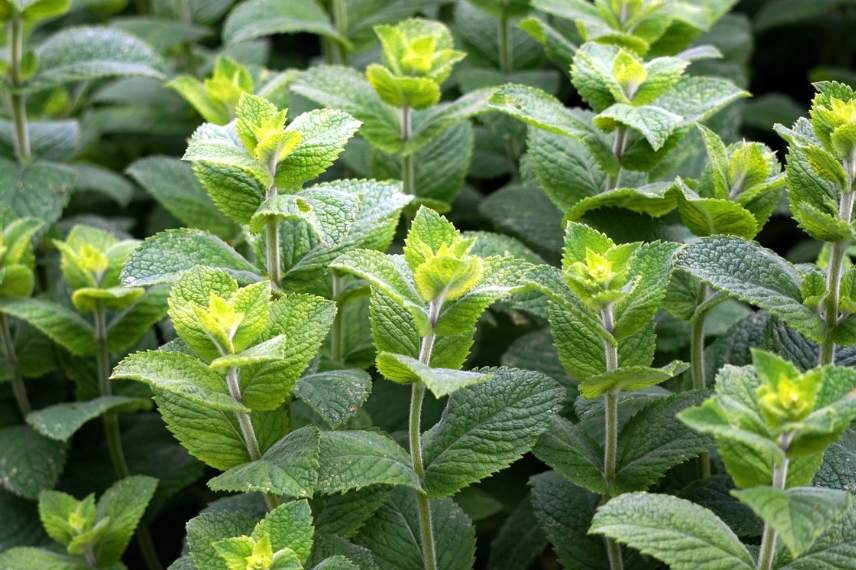
Medicinal properties
Mints excel for digestive problems. They are also tonic and can restore energy or be calming depending on doses used.
Harvest
Pick mint before flowering by cutting stems close to the base. Dry flat or hang in small bunches in a well-ventilated place. Once dry, remove leaves and store them in kraft paper bags.
Infusion
Use a few mint leaves per cup of boiling water. Leave to infuse for 10 minutes then strain.
For calming properties: drink a cup in the evening, combined with lime blossom for example.
For tonic or digestive properties: drink a cup in the morning and a cup after meals.
Author’s note: I consume it regularly whether as an infusion (alone or combined), in cooking, to flavour fruit kefir or with green tea.
Lime tree
The linden (Tilia sp.) is a majestic tree with fragrant and particularly melliferous flowering, often used as a shade tree. Beware, it requires a minimum of space !
To grow in the garden
Hardy, Linden (Tilia sp.) appreciates being planted in full sun or partial shade in deep, fertile, moist but well-drained soil (avoid very wet ground).
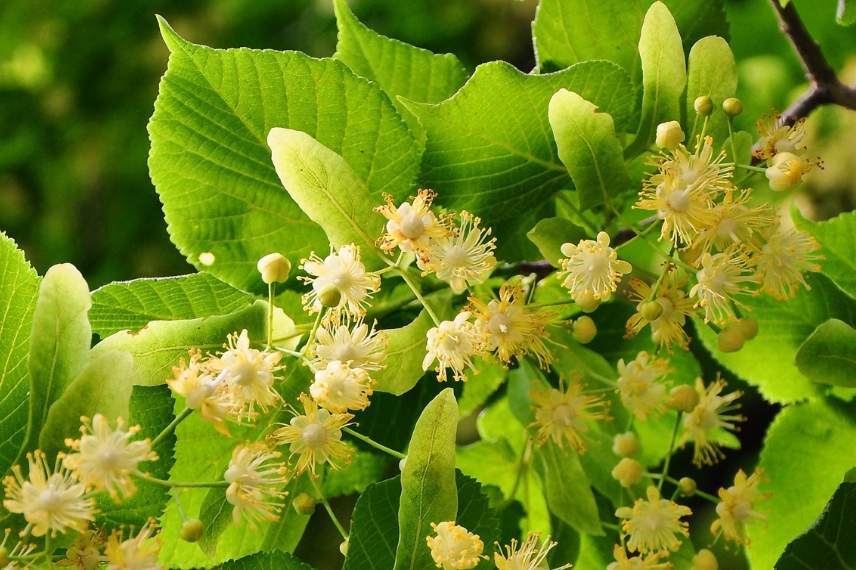
Medicinal properties
Linden flowers are antispasmodic and calming, ideal for stressed people and to promote sleep. They also relieve cough and asthma. They are diuretic and can be used for fever. They are anti-inflammatory and have a beneficial effect in cases of bronchitis or migraines.
Harvest
Harvest linden flowers with their bracts, away from pollution, in dry weather and at the start of flowering. Do not take withered flowers, nor those that form a ball. Spread flowers on racks and dry them in the shade, in a well-ventilated place.
Infusion
Place 5 inflorescences in a cup of boiling water and leave to infuse for 10 minutes.
For its calming effects, drink a cup after the evening meal.
My tip: Don’t hesitate to make blends! I fondly remember mint and linden infusions my grandfather made every evening when I was a child.
Lemon verbena
lemon verbena (Aloysia triphylla) is one of those plants that leaves a lasting impression thanks to the beauty of its flowering and its lemon-scented perfume when brushed.
To grow in the garden
Not very hardy, lemon verbena is grown in open ground in regions with mild winters; otherwise grow in a pot and bring indoors to protect from frost in a bright spot. It favours sunny positions in rich, cool, well-drained soil. In a pot, provide a layer of gravel (or other drainage material) and a mix of potting compost, sand and garden soil.
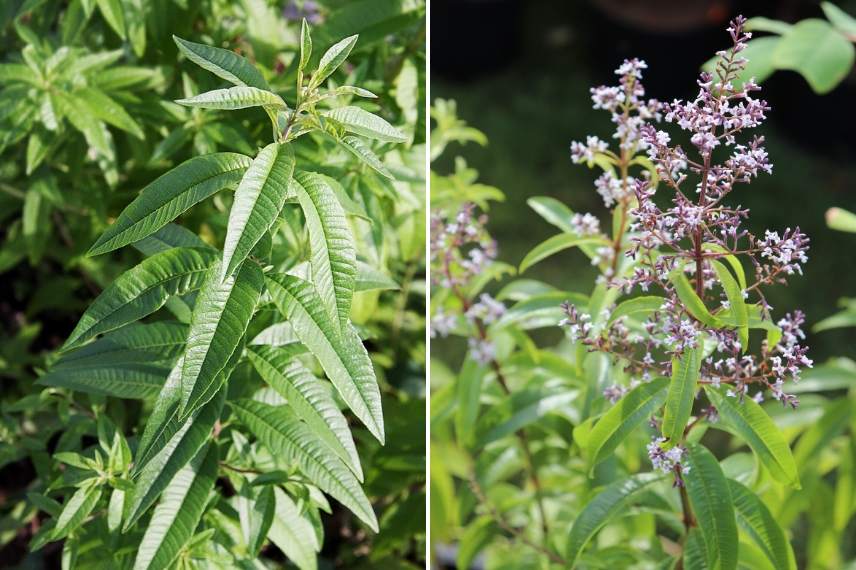
Medicinal properties
It is valuable for indigestion and flatulence. It is also sedative and helps decongest venous circulation, making it a prime ally for heavy legs, varicose veins or haemorrhoids. It has the same properties as lemon balm, which is hardier.
Harvest
Cut stems back by half during summer then a second time before first frosts. Dry leaves in the shade. You can also pick fresh leaves as needed from June to October. Regular harvesting encourages the appearance of new shoots.
Infusion
Steep 5 lemon verbena leaves or 2 teaspoons of crushed leaves in a cup of boiling water. Leave to infuse for 10 minutes.
Drink a cup after each meal to aid digestion.
My tip: Lemon verbena improves taste of infusions that are hard to swallow and also has sedative properties similar to chamomile.
Lemon balm
Lemon balm (Melissa officinalis) is much hardier than lemon verbena and can replace it in cold regions.
To grow it in the garden
Lemon balm prefers fresh, fertile, light soils but can adapt anywhere. Place it in sun or partial shade in a secluded spot where it can settle in. It can be grown in a pot, whether sunk into ground or not, but will need dividing regularly. Also, do not hesitate to prune it before flowering to prevent self-seeding and it becoming too invasive.
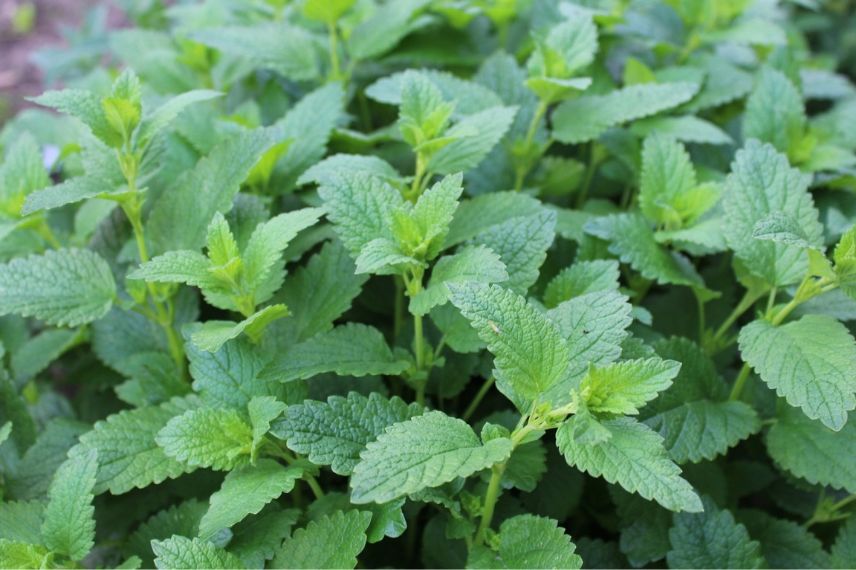
Medicinal properties
Lemon balm is an excellent digestive plant (stomach cramps, colic and flatulence) but it also acts on nervous conditions (insomnia, anxiety, headaches…) and has a reputation for lifting the spirits. It relieves pregnancy nausea and menstrual pains. It can be combined with chamomile or mint in this case. Taken at bedtime, it soothes and prepares for sleep.
Harvest
Harvest takes place between May and October, in the morning, in dry weather. Cut aerial parts of the plant just before flowering. Dry in a single layer on absorbent paper in a well-ventilated, shaded place, turning them every day. Drying should be as rapid as possible to avoid leaves blackening. It is possible to hang the plant in small bunches in a dry, airy place. Note that leaves do not retain their aroma beyond 1 year. You can also pick a few stems as needed but leaves are more aromatic in June.
Infusion
Put 2 teaspoons of finely chopped dried plant or strip leaves from 3 fresh lemon balm stems into a cup of boiling water. Let infuse for 10 minutes before straining.
For good digestion, drink one or two cups after the two main meals.
For a good night’s sleep, drink a cup after the evening meal and a cup at bedtime.
Hyssop
Used in herbal medicine, hyssop (Hyssopus officinalis) is also a very attractive ornamental plant, with intense blue spikes reminiscent of lavender, to incorporate into borders or rockeries. Impossible to do without!
To grow it in the garden
Hyssop likes very sunny locations, in perfectly drained soil, even poor and calcareous.
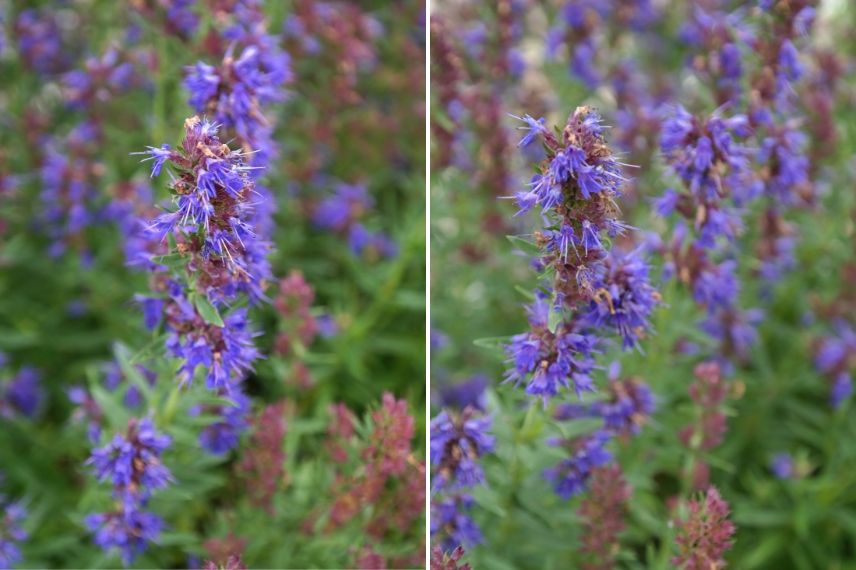
Medicinal properties
Hyssop is a powerful expectorant and loosens bronchial secretions. (Slightly irritating, use it only once the condition has subsided). It is sometimes recommended for ENT conditions but in that case its use is different.
Harvest
In summer, harvest hyssop at flowering. Dry it in a ventilated place and do not handle it while drying. When thoroughly dry, detach the flowers and leaves and put everything in a kraft paper sachet with lid. Careful, hyssop keeps for only one year. Remember to renew it each year. You can also keep part of it and store it in a bottle for culinary use.
Infusion
Put one teaspoon of finely chopped plant into a cup of boiling water. Let infuse for 10 minutes before straining.
At the end of a bronchitic episode, drink 2 to 3 cups per day.
Marshmallow
Once, marsh mallow (Althaea officinalis) was widely used in confectionery but also as a remedy. (Re)discover it!
To grow it in the garden
Marsh mallow thrives in a sunny position in rich, well-draining soil, even if dry. It dislikes excess water in winter. Plant has a fairly short lifespan (5 or even 6 years).
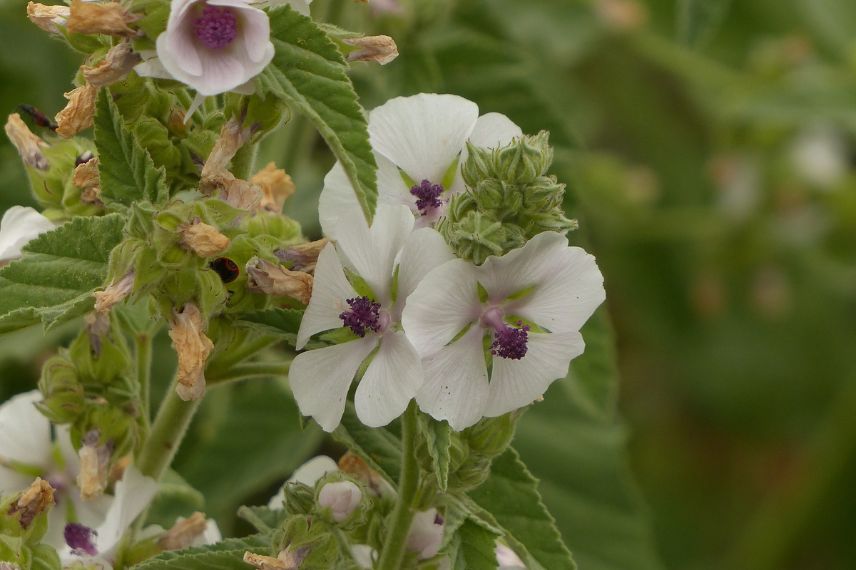
Medicinal properties
Taken as a tisane, marsh mallow is an antitussive (for dry, irritating coughs without expectoration). It soothes pain from inflammation of the mouth, throat, bladder and kidneys (stones). Finally, it is laxative thanks to its mucilage.
Harvest
Harvest flowers just before they open and leaves at the same time. Roots, however, are harvested in autumn. Drying flowers is a little tricky. Pick them in dry weather otherwise they blacken and deteriorate quickly. Dry leaves, perfectly clean, in shade in a thin layer on absorbent paper. Brush roots carefully when dry (do not wash them!), split them in two and cut into half-centimetre pieces. Dry them in a warm, dry place. Store flowers, leaves or roots away from light and moisture. Note that the root is more active than leaves or flowers.
Maceration
Place a heaped teaspoon of crushed leaves in a cup of cold water. Let sit for 1 hour, stirring regularly. Warm the liquid slightly once filtered before drinking. Maceration is preferable to infusion so that its medicinal properties (mucilages) are not inhibited by heat.
Same method can be used with flowers alone.
Drink 3 cups per day for a laxative, soothing effect and for coughs.
Infusion of roots
Place 1 teaspoon of finely chopped root in a cup of cold water. Let stand for 1 to 2 hours. Stir from time to time. Bring to the boil. Strain and drink 3 to 4 cups per day.
Dog rose
Dog rose (Rosa canina) is a common wild rose in the countryside, but it is perfectly possible to grow it in the garden. It will charm with its wonderful single corollas and fragrant flowers in spring, then delight with its hips from autumn onwards.
To grow it in the garden
Dog rose adapts to all soils although it does have a preference for soils rich in humus. Finally, it favours full sun, although it tolerates light shade.
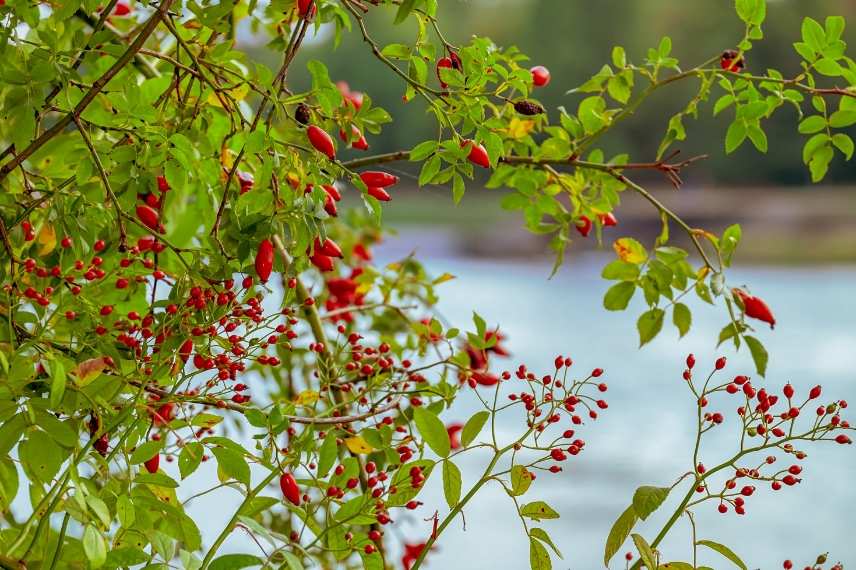
Medicinal properties
Infusion of dog rose flowers has a laxative effect while hips are rich in vitamin C, making them tonic and antiscorbutic.
Harvest
In spring, harvest flower buds. Dry them in the shade. Pick hips from September as fruits ripen. Choose the largest hips and cut them in half. You can dry them in a warm place. When fruits are thoroughly dry, store them in an airtight box. Remember to inspect the box from time to time and discard contents if small insects are present.
Flower infusion
Place a pinch of flowers in a cup of boiling water. For a mildly laxative effect, drink 3 cups per day.
Hip infusion
Put 1 to 2 teaspoons of crushed hips into a small saucepan. Bring to the boil, cover and let simmer for 5 minutes. Turn off the heat and let infuse for another 10 minutes with, for example, untreated apple peels. It’s delicious! For a tonic effect, drink 1 to 2 cups per day.
Blackcurrant bush
Blackcurrant bush (Ribes nigrum) is an easy-to-grow bush whose small tart black fruits are traditionally harvested. Leaves are widely used medicinally and blackcurrant tea is popular!
Growing in the garden
Blackcurrant bushes thrive in heavy, moist, deep soil, in sun that is not scorching and sheltered from spring frosts. Some varieties are self-fertile (Andega), others require a pollination partner (Géant de Boskoop, Noir de Bourgogne).
Medicinal properties
Blackcurrant leaves are diuretic and can be used for urinary stones, rheumatism (gout) and also diarrhoea.
Harvest
Harvest leaves as needed, preferably in spring before flowers open. Dry them out of direct sunlight.
Infusion
Put 2 teaspoons of finely chopped leaves into a cup of boiling water. Let infuse for 5 to 10 minutes.
Blackcurrant is an excellent diuretic; drink several times a day between meals.
Officinal passionflower
Passionflower (Passiflora incarnata) is a perennial deciduous liana, hardier than often thought. This botanical species forms mauve flowers crowned with large pale mauve filaments.
Growing in the garden
Passionflower dies back in winter but regrows from the stump in spring down to -10/-12°C. In favourable climates, it is evergreen and needs no special protection. Elsewhere, it is wiser to give it a position sheltered from cold, drying winds. Likewise, a good winter mulch will be beneficial. Passionflower loves sun and heat! Plant it in good garden soil, deep and well-drained, rather cool in summer.
→ Feel free to consult our fact sheet: “Passionflower, planting, growing, pruning“.
Medicinal properties
Passionflower is used for its sedative, tranquilising and relaxing effect. It helps fight anxiety, panic, nervousness and sleep disorders. It is also used for nervous spasms and heart palpitations.
Harvest
Harvest whole stems of plant at flowering then dry them in a dry, airy place. Once dry, chop them then store in a kraft paper bag.
Infusion
Steep one teaspoon of finely chopped dried plant in a cup of boiling water and leave to infuse for 10 to 15 minutes.
To aid sleep, drink 1 cup before bed or 2 to 4 times per day in case of palpitations.
Author’s note: You can combine it with hawthorn to enhance its effectiveness.
Cherry trees
Cherry trees (Prunus avium, cerasus) are fruit trees well known for their delicious fruit and, as the maxim goes, “Nothing is lost, nothing is created, everything is transformed”, cherry stalks have a bright future ahead of them!
To grow in the garden
Cherry trees are undemanding and grow in all types of fresh, light, deep soil and, above all, not waterlogged. Plant them in full sun.
→ Discover our advice sheet: “Cherry tree: planting, pruning and maintenance” .
Medicinal virtues
Cherry stalks have a recognised diuretic effect. They are also sedative, mildly laxative and particularly indicated for rheumatic problems.
Harvest
In April or May, keep all cherry stalks from cherries you consume. Dry them as you collect them on racks in shade. Store in kraft paper bags.
Decoction
Put 2 pinches of cherry stalks per cup. Boil for 10 minutes then leave to infuse for another 10 minutes before straining.
Drink 1/2 L per day for urinary insufficiency or rheumatic pain.
Some tips
- I haven’t stated it every time but, of course, make sure to rinse plants with clear water before using them.
- I recommend using a teapot, an herbal tea infuser or any non-metal container to infuse your herbal teas. Metal can sometimes give the liquid a taste.
- If you wish to make herbal teas with other plants not listed here, note that the dose is 1 level teaspoon of dried or fresh plant per cup or 2 tablespoons per litre of water. Dosages vary depending on plant and exceeding the recommended dose usually has only minor effects, unless stated otherwise. You can also consult our sheet: “15 medicinal plants to grow at home“
- Do not consume plants that have been contaminated by pesticides! And do not consume plants whose identity you are not absolutely certain of.
- Unless stated otherwise (often when related to digestive issues), “sweet beaks” can, of course, sweeten their herbal tea: honey, brown sugar, demerara, agave syrup…
- For storage, after drying your plants in a cool, airy and dark place, keep them in kraft paper bags for use throughout the year.
- Finally, for straining, I use a universal coffee filter which I simply rinse with water after use. I also sometimes use sterile compresses as tea bags. Very handy!
Further reading
- Teas, herbal infusions and health drinks by Marie-France Farré and Noëlie Cotteaux, published by Eyrolles editions
- Subscribe!
- Contents
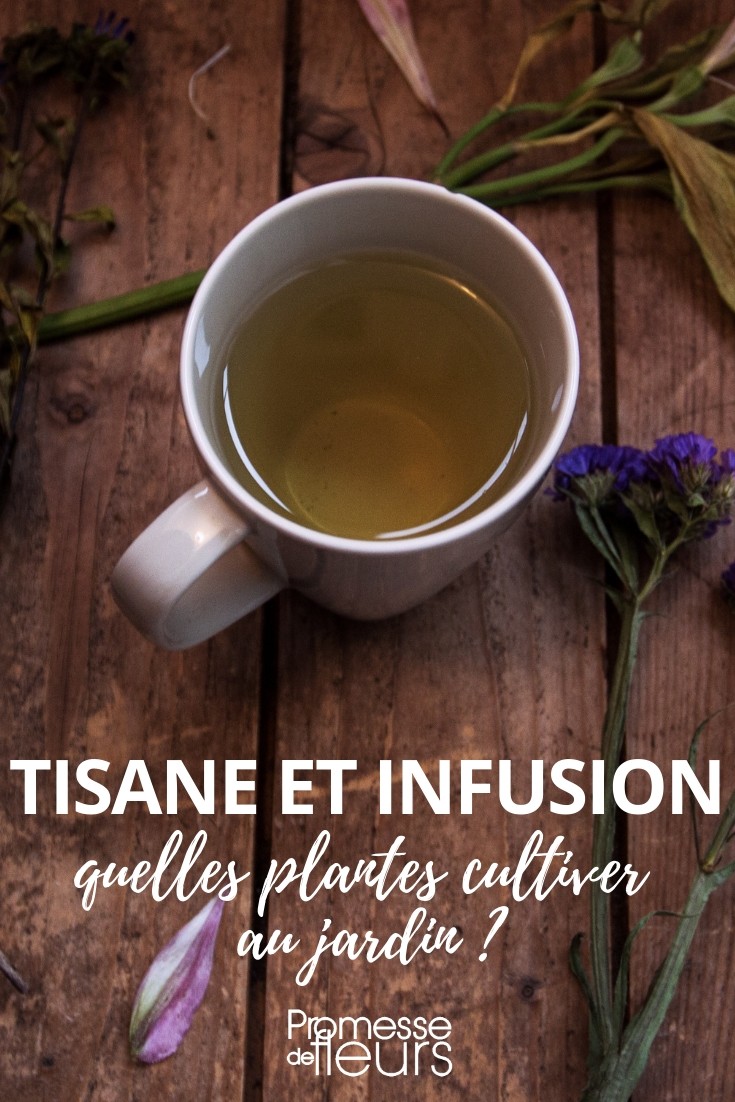































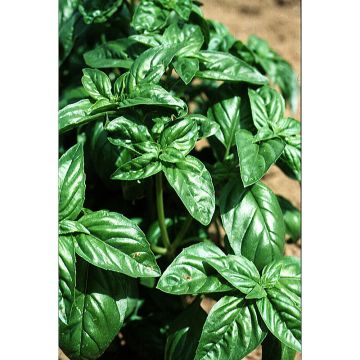

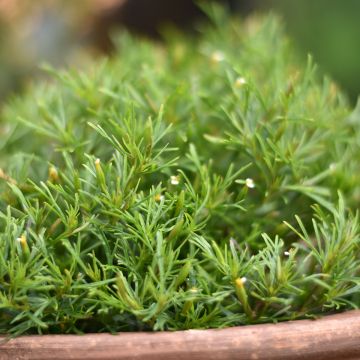
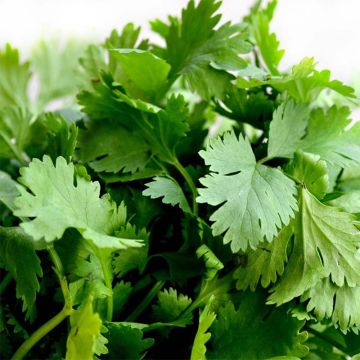
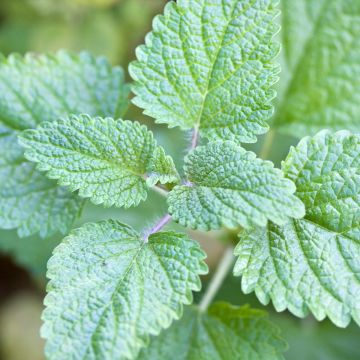
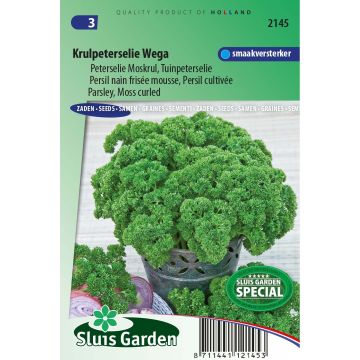
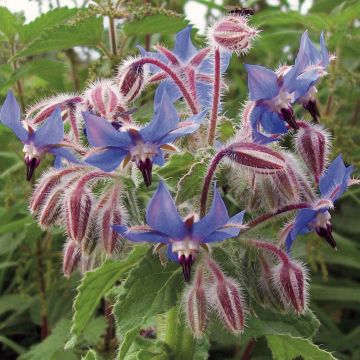
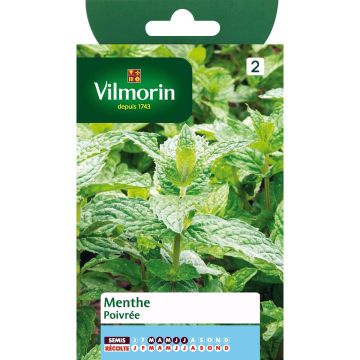
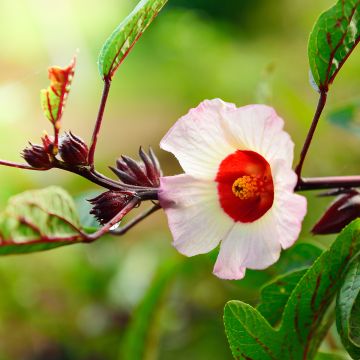
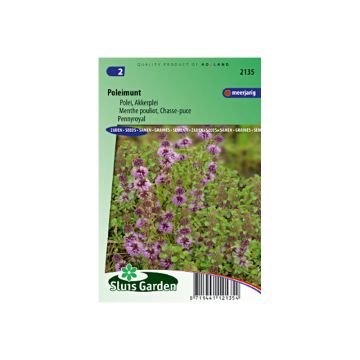
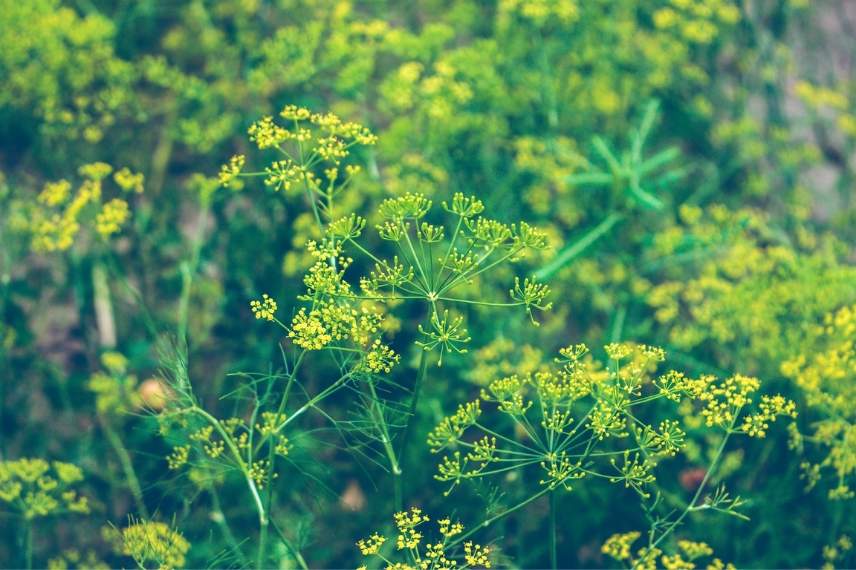
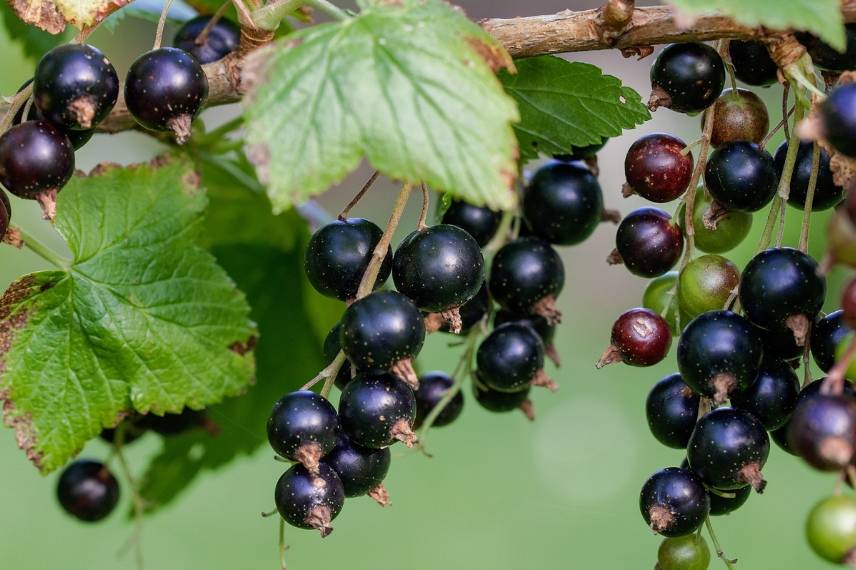
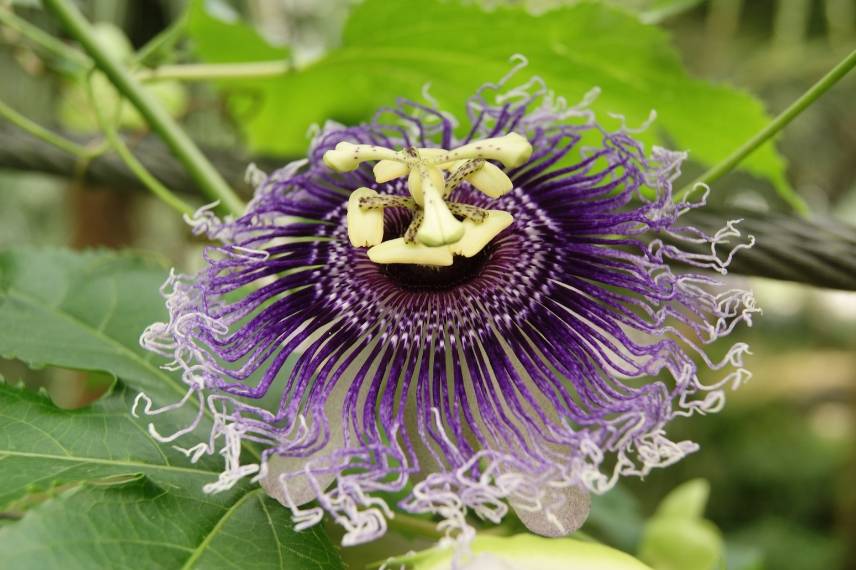
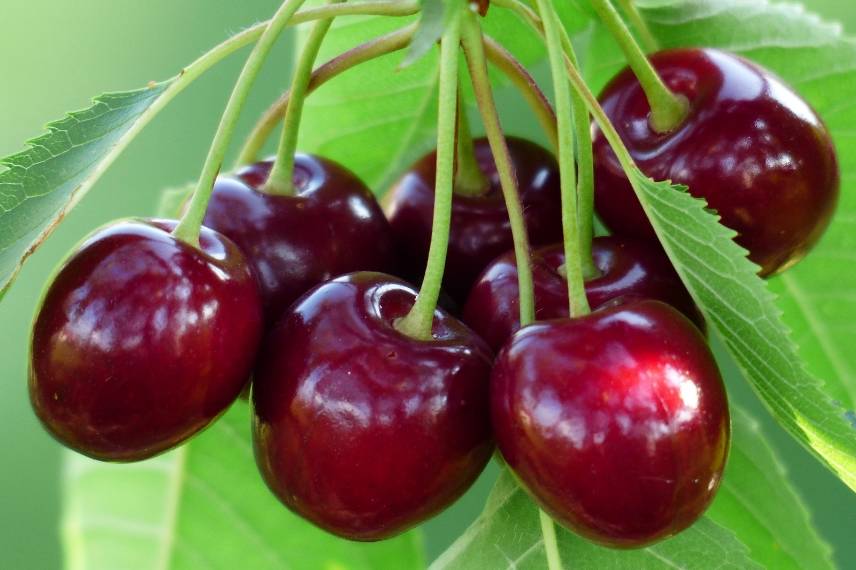
Comments